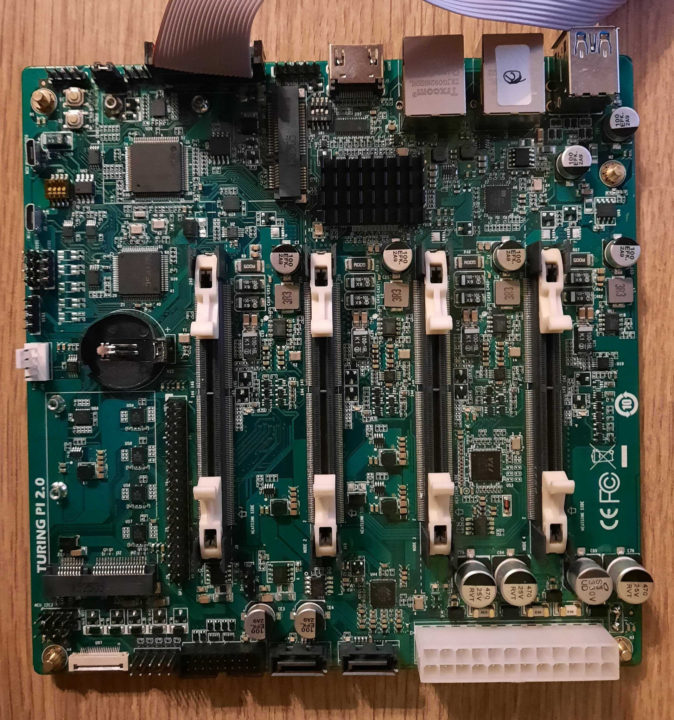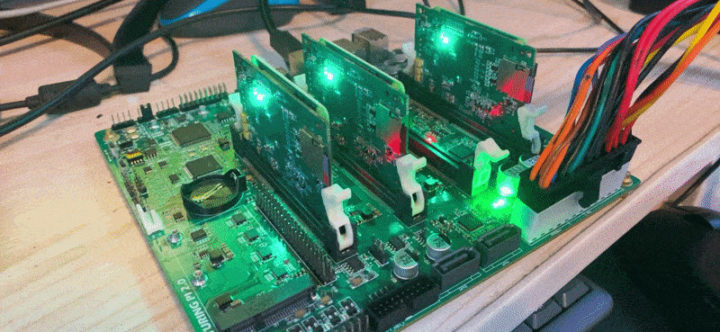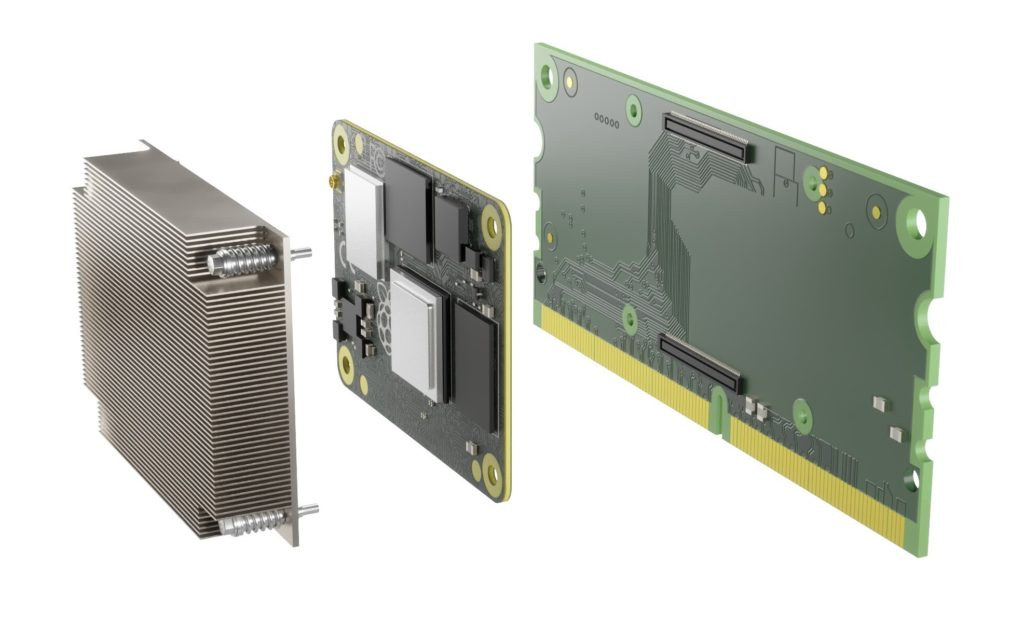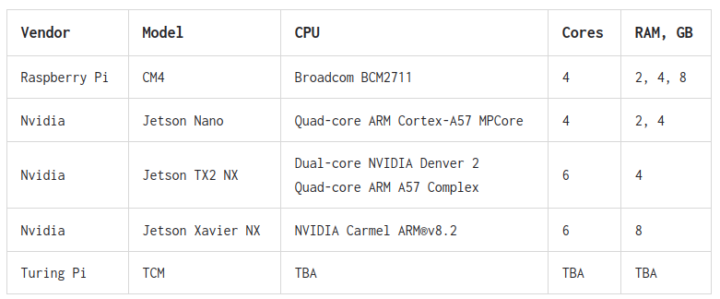The Turing Pi V2 is a mini-ITX cluster board that builds on the Turing Pi mini-ITX cluster board taking up to 7 Raspberry Pi Compute Modules introduced in 2019, but instead supports up to four Raspberry Pi CM4 (Compute Modules 4) or NVIDIA Jetson Nano/TX2 NX/Xavier NX SO-DIMM system-on-modules.
The Turing Pi 2 board is equipped with two Mini PCIe sockets, two Gigabit Ethernet ports, two SATA III ports, four USB 3.0 ports, a 40-pin GPIO header, and a 24-pin ATX connector for power.
Since board-to-board connectors – as found in Raspberry Pi Computer Module 4 – are not ideal for density, the company went with a design including 260-pin SO-DIMM connectors plus CM4 adapter boards, a design that allows them to also integrate other SoMs like the NVIDIA Jetson SO-DIMM modules.
Turing Pi V2 specifications:
- SoM interface – 4x 260-pin SO-DIMM slot for up to four Raspberry Pi CM4 (via adapter) or NVIDIA Jetson modules
- Storage – 2x SATA III ports via a PCIe controller connected to one module
- Video Output – 1x HDMI port, 1x MIPI DSI header
- Audio – Digital audio via HDMI
- Network connectivity
- 2x Gigabit Ethernet RJ45 ports
- 1 Gbps 8-port management switch with IEEE802.1Q VLAN for the two RJ45 ports, and four Gigabit Ethernet interfaces between the modules
- USB – 4x USB ports, USB header
- Expansion
- 2x mPCIe sockets, each connected to a specific module
- I2C header for cluster management
- 40-pin GPIO header
- Misc – RTC + coincell battery holder, system fan connector, Board Management Controller with remote access
- Power Supply – 24-pin ATX header
- Dimensions – 170 x 170 mm (Mini-ITX form factor)
There are some positive developments with support for mPCIe ports and dual SATA via a PCIe to SATA controller, but the number of supported modules decreased from 7 to 4. They wanted to keep the costs in check, and the photo below may also explain why…
Each module will be quite thicker because of the need to stack the Raspberry Pi CM4 module on a 260-pin module, and the thick heatsink required to keep the quad-core Cortex-A72 processor cool. This design also allows them to be more flexible, and add additional modules to the Turing Pi 2, including one designed in-house – the Turing Pi TCM – that should be announced later on.
The Turing Pi V2 clusters will include firmware to control cluster operations. The firmware provides over-the-air updates (OTA), remote cluster management, including serial console over LAN, and flashing OS images remotely. Some of the use cases for Turing Pi 2 include edge infrastructure for self-hosted applications & services, designing an Arm Workstation for developers, building images for AWS instances for Amazon Graviton 1/2 processors, Kubernetes, etc…
The board development is getting finalized, the final prototypes should be ready soon, and pre-orders at expected to start in before the end of the year, with shipping scheduled to start in Q1 2022. They are just not ready to provide an exact launch date and pricing at this time and promise more details in the coming weeks. The product page has not been updated with more recent changes, and still shows a block diagram with four Raspberry Pi GPIO headers, instead of one, as well as an audio jack that has been removed since then.
[Update: Initially published on October 21, 2020, the post was updated as the company’s announced more details about Turing Pi v2, including specification changes and support for NVIDIA modules]

Jean-Luc started CNX Software in 2010 as a part-time endeavor, before quitting his job as a software engineering manager, and starting to write daily news, and reviews full time later in 2011.
Support CNX Software! Donate via cryptocurrencies, become a Patron on Patreon, or purchase goods on Amazon or Aliexpress







